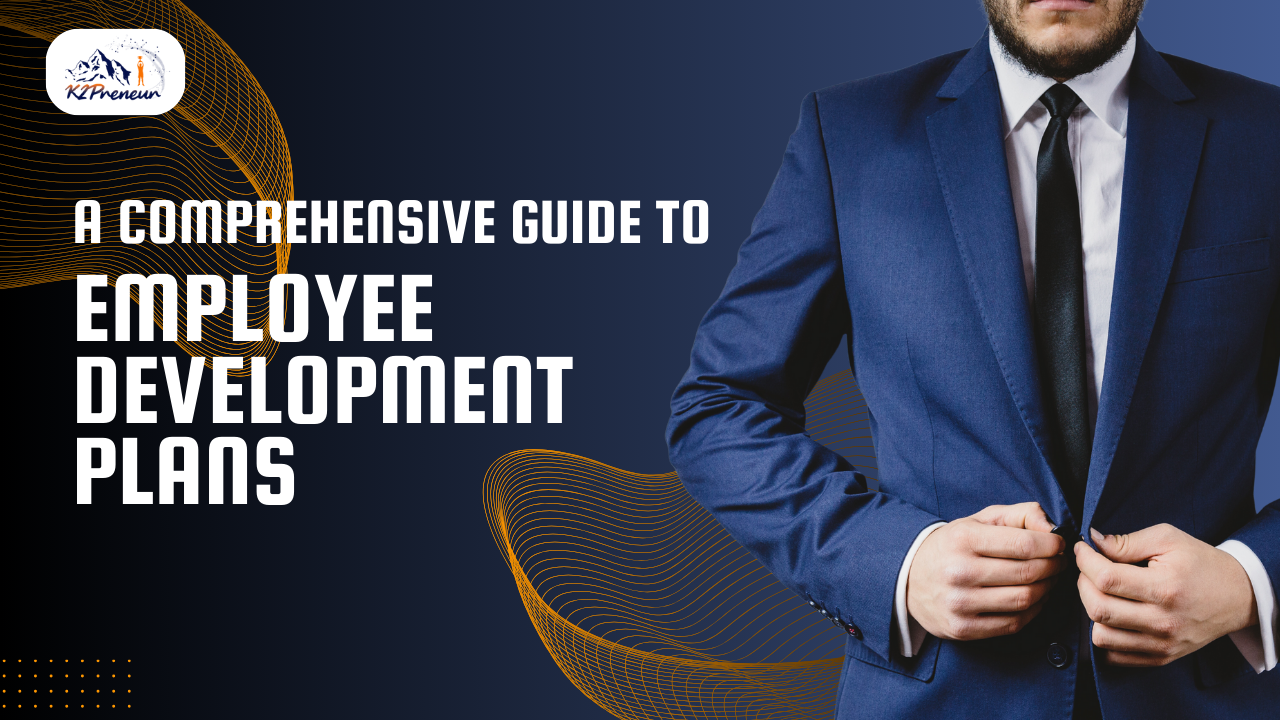A Comprehensive Guide to Employee Development Plans is not only a tool for growth in today’s changing workplace but also a strategic essential for optimizing success. Businesses that place a high priority on staff development foster a culture of lifelong learning, increased output, and sustained retention. This thorough guide empowers leaders and HR professionals with the insights and tactics to construct effective development plans customized to individual and corporate goals. This guide gives employees at every level a step-by-step framework to empower them, from identifying skill gaps to defining achievable objectives. You may cultivate a motivated, competent, and future-ready workforce by coordinating personal development with organizational goals. A well-structured maximizing success and a comprehensive guide to development plan are essential for long-term success, regardless of your goals, whether to raise engagement, boost performance, or position staff for leadership positions.
The Importance of an Employee Development Plan:
A strong employee development plan encourages engagement and raises morale. Development plans also help retain talent by making workers feel appreciated and providing clear professional advancement paths within the organization. In the end, spending money on staff development results in a more knowledgeable, flexible workforce, setting up the company for long-term success and a competitive edge. Showing a dedication to professional development, should equip staff for upcoming difficulties and improve talent retention. A staff development plan is essential for both business success and improving individual performance.
Benefits of an Employee Development Plan:
These benefits are as follows:
-
Implementing a well-structured staff development strategy offers several advantages for both people and enterprises.
-
For employees, it provides clear avenues for skill advancement, career growth, and personal fulfillment, promoting a sense of purpose and motivation.
-
A more competent and qualified workforce benefits organizations by fostering greater creativity.
-
It shows productivity and flexibility in response to shifting market conditions.
-
Development plans are also essential for keeping top personnel since they show that employers value their professional development, which lowers turnover costs.
-
Employees who feel encouraged in their development are more engaged, resulting in improved morale and healthier working connections.
-
These strategies also aid in filling in skill shortages, enabling teams to confidently take on upcoming problems.
Types of Employee Development Plans:
Aiming for long-term growth, career development plans outline steps for employees to achieve career aspirations, including training, mentorship, and cross-functional experiences.
Plans for career aspiration development concentrate on matching long-term objectives with internal growth prospects. In order to keep workers relevant in their positions, training programs are made to improve particular technical or soft abilities. By providing direction from seasoned executives and exposure to other business divisions, mentoring, and cross-functional experiences also aid in the development of employees by encouraging adaptability and leadership potential.
Employee Development Plan: Key to Maximizing Success:
A strategic way to improve your workforce’s competencies is an employee development plan, which is essential for achieving success. It assists in determining areas of strength and room for development, assisting staff members in reaching their professional aspirations, and advancing the overarching goals of the company. Businesses promote growth by providing individualized learning opportunities including workshops, training courses, and mentorship, which improves output and job satisfaction. Development plans also provide workers the confidence to take on new tasks, which boosts their motivation and engagement. Additionally, by showcasing a dedication to their professional development, these plans assist companies in keeping top talent. Putting into practice efficient staff development programs is a crucial difference that promotes long-term success and expansion in the current competitive environment.
Uses of Employee Development Plans:
These are as follows:
-
Plans for employee development are flexible instruments that can improve organizational and individual performance.
-
They offer a methodical framework for locating and filling skill shortages, empowering staff members to carry out their jobs more successfully.
-
Development plans can facilitate career advancement by coordinating individual goals with company objectives, which increases engagement and drive.
-
These plans guarantee employers a workforce prepared for the future and able to adjust to changing industry demands.
-
Additionally, they increase talent retention by displaying a commitment to employee growth, eventually promoting productivity and organizational sustainability.
Methodology of Employee Development Plans:
Developing a successful staff development plan requires a methodical approach to guarantee that it satisfies organizational and individual needs. Performance reviews, feedback, and self-assessments are used to evaluate present skills and pinpoint gaps. Next, defining clear, quantifiable goals helps link employee aspirations with business objectives. Opportunities for practical learning are offered through a customized combination of mentoring, training courses, and practical projects. Regular monitoring and feedback ensure progress is tracked. These modifications are made as needed. Lastly, by assessing the plan’s effects, organizations may gauge the success of it. It should enhance future tactics, starting a never-ending cycle of development.
Best Practices for Implementing an Employee Development Plan:
It takes meticulous preparation and execution to successfully implement an employee development plan. The first step is to make sure the plan meets broader business objectives by coordinating it with organizational goals. Define roles and duties precisely so that it is clear how each worker contributes to the success of the business. Encourage staff members to participate in the process by soliciting their opinions and career goals during the planning stage. To keep staff on track, set quantifiable goals to monitor their progress and give them regular feedback.
Organizations that invest in their growth see improvements in productivity, innovation, and overall performance; development programs also boost employee loyalty and satisfaction, which reduces turnover and associated expenses; and a well-developed workforce, when aligned with business objectives, gives them a competitive edge and lays the groundwork for long-term success.
Final Thoughts:
Plans for employee development are essential to creating a competent, robust staff that propels business success. When properly applied, they promote ongoing education, raise worker satisfaction, and match personal development with corporate goals.
FAQ’s:
Qno1: Which Elements Make Up a Successful Employee Development Plan?
Ans: Clear skill assessments, areas for improvement, measurable objectives, a mix of learning strategies (e.g., training, mentorship, and on-the-job experience), and frequent feedback are all components of an effective employee development plan.
Qno2: How Do Employee Development Plans Contribute to Business Success?
Ans: By boosting engagement, increasing productivity, and developing abilities, employee development strategies help businesses succeed. Improved performance, creativity, and talent retention result from their assistance in developing a skilled, well-rounded staff that can handle upcoming difficulties. Long-term organizational performance is ultimately fuelled by these programs, which match personnel development with business objectives.






